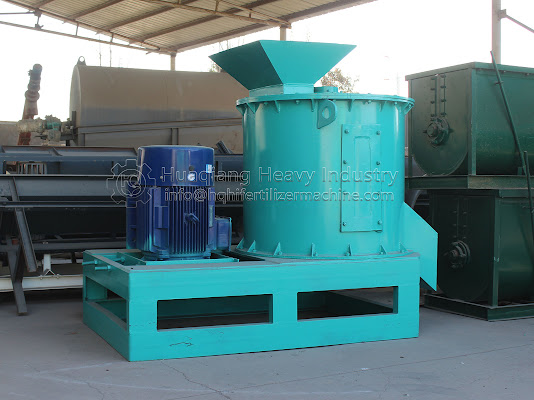Mushroom residue organic fertilizer production line process
Mushroom slag
and other fungus slags are large amounts of waste generated after harvesting
mushrooms and other large-scale fungus planting sites. In the early treatment,
many mushroom planting bases used mushroom rods as combustibles. It causes
pollution and is also a waste of resources. Since the mature technology and
processing technology of biofertilizer project , mushroom residue of slag type has been used as one of
the raw materials for processing organic fertilizer.
Process flow of mushroom residue processing organic fertilizer production line:
Mushroom slag processing organic fertilizer, the first is the use of compost fermentation technology. The use of microbial engineering technology in the composting process to ferment and differentiate the litter rich in livestock and poultry manure, combined with the biological fermentation bed pig form, is also a new way for the harmless disposal of manure.
Pig manure and urine are mixed with sawdust, straw, sawdust, rice husk and other litter. Under the action of special microbial strains, the mixture is continuously degraded, digested or converted into other nutrients, thereby completing zero pollution discharge of fecal disposal.
Process flow of mushroom residue processing organic fertilizer production line:
Mushroom slag processing organic fertilizer, the first is the use of compost fermentation technology. The use of microbial engineering technology in the composting process to ferment and differentiate the litter rich in livestock and poultry manure, combined with the biological fermentation bed pig form, is also a new way for the harmless disposal of manure.
Pig manure and urine are mixed with sawdust, straw, sawdust, rice husk and other litter. Under the action of special microbial strains, the mixture is continuously degraded, digested or converted into other nutrients, thereby completing zero pollution discharge of fecal disposal.
Supporting
equipment for mushroom organic fertilizer manufacturing process:
1. Preparation: Weigh the livestock manure (water content at 70%) to be disposed of; prepare the fungus.
2. Production technology: Mix livestock and poultry manure and strains in a fraction of 1:10000, and then mix. Then the opponent's solar panel is reversed, so that the solar heat can pass through the sun panel to increase the room temperature of the fermentation plant and accelerate the initial temperature of the fermentation material. A venting hole is left at the top to allow gas such as water vapor generated during fermentation of the material to be discharged. The four walls are brick-concrete structures, leaving doors and windows.
3. Fermentation tank construction: There are two fermentation tanks in the fermentation workshop. The length of the tank is 18~25m and the width is 2.5m. The side of the tank is made of brick and the surface is cemented. When the fermentation tank is fermented for 4-5 days, the fermentation material is turned from one tank to two tanks. It usually takes about 20 to 25 days from feeding to discharging.
4. Process equipment and processes. The poultry manure (cattle manure, sheep manure, chicken manure, etc.) pretreated by the fermentation turner is directly transported to the raw material silo (or raw material agitator).
5. Transfer to the disc feeder and control the feed rate through the inverter.
6. Transfer to the organic fertilizer granulator machine and granulate the treated fertilizer.
7. The granulated particles are sieved.
8. The qualified products after screening are transported to the automatic packaging scale for weighing, packaging and storage.
1. Preparation: Weigh the livestock manure (water content at 70%) to be disposed of; prepare the fungus.
2. Production technology: Mix livestock and poultry manure and strains in a fraction of 1:10000, and then mix. Then the opponent's solar panel is reversed, so that the solar heat can pass through the sun panel to increase the room temperature of the fermentation plant and accelerate the initial temperature of the fermentation material. A venting hole is left at the top to allow gas such as water vapor generated during fermentation of the material to be discharged. The four walls are brick-concrete structures, leaving doors and windows.
3. Fermentation tank construction: There are two fermentation tanks in the fermentation workshop. The length of the tank is 18~25m and the width is 2.5m. The side of the tank is made of brick and the surface is cemented. When the fermentation tank is fermented for 4-5 days, the fermentation material is turned from one tank to two tanks. It usually takes about 20 to 25 days from feeding to discharging.
4. Process equipment and processes. The poultry manure (cattle manure, sheep manure, chicken manure, etc.) pretreated by the fermentation turner is directly transported to the raw material silo (or raw material agitator).
5. Transfer to the disc feeder and control the feed rate through the inverter.
6. Transfer to the organic fertilizer granulator machine and granulate the treated fertilizer.
7. The granulated particles are sieved.
8. The qualified products after screening are transported to the automatic packaging scale for weighing, packaging and storage.




Comments
Post a Comment